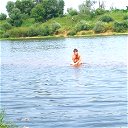помогите перевести :
. Iron Age hill forts near the city are at Leigh Woods and Clifton Down on the side of the Avon Gorge, and on Kingsweston Hill, near Henbury. During the Roman era there was a settlement, Abona, at what is now Sea Mills, connected to Bath by a Roman road, and another at the present-day Inns Court. There were also isolated Roman villas and small Roman forts and settlements throughout the area.
The town of Brycgstow (Old English, "the place at the bridge") appears to have been founded in c.1000 and by c.1020 was an important enough trading centre to possess its own mint, producing silver pennies bearing the town's name. By 1067 the town was clearly a well fortified burh that proved capable of resisting an invasion force sent from Ireland by Harold's sons. Under Norman rule the town acquired one of the strongest castles in southern England.
The area around the original junction of the River Frome with the River Avon, adjacent to the original Bristol Bridge and just outside the town walls, was where the port began to develop in the 11th century. By the 12th century Bristol was an important port, handling much of England's trade with Ireland, including slaves. In 1247 a new stone bridge was built, which was replaced by the current Bristol Bridge in the 1760s, and the town was extended to incorporate neighbouring suburbs, becoming in 1373 a county in its own right. During this period Bristol also became a centre of shipbuilding and manufacturing. By the 14th century Bristol was one of England's three largest medieval towns after London, along with York and Norwich, and it has been suggested that between a third and half of the population were lost during the Black Death of 1348–49. The plague resulted in a prolonged pause in the growth of Bristol's population, with numbers remaining at 10,000–12,000 through most of the 15th and 16th centuries.
In the 15th century, Bristol was the second most important port in the country, trading to Ireland, Iceland, and Gascony. Bristol was the starting point for many important voyages, including that led by Robert Sturmy (1457–58) to try to break the Italian monopoly over trade to the Eastern Mediterranean. Having been rebuffed in the east, Bristol merchants turned west, being involved in expeditions into the Atlantic, in search of the Isle of Hy-Brazil, by at least 1480. These Atlantic voyages were to culminate in John Cabot's 1497 voyage of exploration to North America and the subsequent expeditions undertaken by Bristol merchants to the new world up to 1508. These include one led by William Weston of Bristol in 1499, which was the first English-led expedition to North America. In the sixteenth century, however, Bristol merchants concentrated on developing their trade to Spain and its American colonies. This included the smuggling of 'prohibited' wares, such as foodstuffs and guns, to Iberia, even during the Anglo-Spanish war of 1585–1604. Indeed, the scale of the city's illicit trade grew enormously after 1558, to become an essential component of the city's economy.
The Diocese of Bristol was founded in 1542, with the former Abbey of St. Augustine, founded by Robert Fitzharding in 1140, becoming Bristol Cathedral. Traditionally this is equivalent to the town being granted city status. During the 1640s English Civil War the city was occupied by Royalist military, and they built the Royal Fort House on the site of an earlier Parliamentarian stronghold.
Renewed growth came with the 17th century rise of England's American colonies and the rapid 18th century expansion of England's part in the Atlantic trade in Africans taken for slavery in the Americas. Bristol, along with Liverpool, became a centre for the Triangular trade. In the first stage of this trade manufactured goods were taken to West Africa and exchanged for Africans who were then, in the second stage or middle passage, transported across the Atlantic in brutal conditions.
